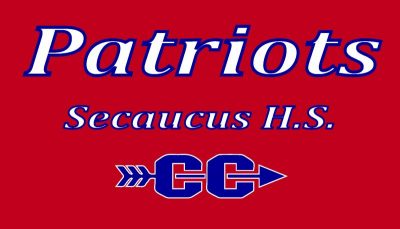Tips for Choosing Athletic Shoes
Proper-fitting shoes make all the difference whether you walk or run. Running and walking are among the purest, most natural forms of exercise around. With newfangled innovations like Freon-filled midsoles and pump-it-up tongues, it’s knowing which shoes to buy that seems to require an advanced degree.
Choose the wrong athletic shoes and you could end up lying on the couch nursing
shin splints or aching heels instead of enjoying a brisk walk or run.
While most specialty sport-shoe stores have knowledgeable staff to guide you, you’ll be a few steps ahead of the game armed with some basic knowledge about your feet and their specific needs. Here is some expert advice to heed before buying new footwear:
Don’t make shoes multitask.
Walking shoes are stiffer; running shoes are more flexible, with extra cushioning to handle greater impact. If you do both activities, get a pair for each one.
Know your foot.
Sure, we’ve all got 10 toes and two heels, but beyond that, feet come in a variety of shapes — and knowing your foot’s particular quirks is key to selecting the right pair of shoes. Most major brands now offer a model to suit every foot type.
One way to determine your foot’s shape is to do a “wet test”— wet your foot, step on a piece of brown paper and trace your footprint. Or just look at where your last pair of shoes shows the most wear.
If your footprint shows the entire sole of your foot with little to no curve on the inside — or if your shoes show the most wear on the inside edge — it means you’ve got low arches or flat feet and tend toward overpronation — meaning your feet roll inward. Overpronation can create extra wear on the outside heel and inside forefoot. You’ll want a shoe with a motion-control feature and maximum support.
If the footprint shows only a portion of your forefoot and heel with a narrow connection between the two — or if your shoes wear out mostly on the outside edge — you have high arches and tend to underpronate (also called supinate), meaning your feet roll outward. Underpronation causes wear on the outer edge of the heel and the little toe. Look for a cushioned shoe with a soft midsole.
You have a neutral arch if your footprint has a distinct curve along the inside and your shoes wear out uniformly. Look for a “stability” shoe, which has the right mix of cushioning and support.
Feet Change
Measure your foot frequently.
“It’s a myth that foot size doesn’t change in adults,” says Steven Raiken, MD. “It does change as we get older, so have your feet measured twice a year. Sizes also vary between brands, so go by what fits, not by what size the shoe is.” Raiken is director of the foot and ankle service at the Rothman Institute at Thomas Jefferson University Hospital in Philadelphia.
FREQUENTLY ASKED QUESTIONS ABOUT FIT
Do socks matter?
YES. Look for socks made of moisture-wicking acrylics or polyester blends, which absorb moisture, keep feet dry, and help prevent blisters. Cotton socks get wet and stay wet, causing friction that contributes to hot spots and blisters.
When do I replace running shoes?
Running shoes are generally built to last 300-500 miles. By that time, the cushion and support features of the shoe start to break down significantly. A runner logging 20 miles a week should expect to get a new pair of shoes every four to six months.
Do I need to bring anything with me when I’m ready to buy new shoes?
Bring in your current running or walking shoes and the socks you like to wear while running or walking. If you come in with cotton socks, be prepared to experience the joy of trying on a real technical running sock. If you wear orthotics or another type of insert bring them too, as they can affect the fit of the shoe.
Why do you need to see my old shoes?
Bring in your current shoes (whether you liked them or not) to see what you’ve been wearing and how you’ve been wearing them. Wear patterns on soles can help a fit specialist identify your biomechanic needs and determine the proper type of shoe for your feet.
Why can’t I just pick a shoe with nice colors? Read this one carefully!!!!
When it comes to running and walking shoes, you must choose function over fashion. We’ll bring you a selection of shoes that best meet your needs. Sometimes they look good too!
I walk. Is it OK to wear a running shoe?
Yes. Running shoes offer a wider variety of cushioning and support features than an be found in most walking shoes. There are some good walking shoes out there — using running shoe technology — but many walkers are successful with running shoes at distances ranging from a couple of miles to the marathon.
Why do you watch me walk/run?
We’re looking at your foot strike and gait to evaluate the mechanics of your stride, which in turn helps us decide the proper type of shoe for you.
Why do I need a running shoe? Can’t I just run in my favorite sneaker?
Running shoes are built to support and cushion your foot while in the specific act of running and walking. While running, the impact of each foot strike is three to five times your body weight. Your Keds just can’t cut it!
Why is my running shoe size bigger than the size of my dress shoes?
Running shoes are just sized differently than other shoes, even other athletic shoes. Also, you need about a thumb’s width of room between your longest toe and the front of the running shoe for the footwear to function properly. Expect your running/walking shoe to be from one-half to two sizes larger than your other shoes.
Why do I need to take off my socks when being fit for shoes?
Looking at the bare foot, we can better see the shape of your arch, as well as evidence of blisters or hot spots, calluses, corns, bunions, or other things that need to be considered when fitting a shoe.
CHOOSING THE RIGHT SHOE
Selecting a shoe is one of the most important equipment choices a runner or walker makes. Here are a few important considerations to help choose a shoe that fits and functions properly.
Be prepared to spend 20 to 45 minutes
at the store, to allow time to be fit properly and to try on a variety of styles once the specific type of shoe you need is determined. By examining your feet and your old running shoes (if you have them), watching you run or walk, and discussing your fitness history and goals, a knowledgeable staff can guide you to the right shoe type for your feet.
Running shoes are generally divided into three major types:
“Neutral,” for those who need little additional support; “stability,” the broadest category, for those who need a moderate amount of support; and “motion control,” shoes with maximum support. These are general guidelines.
Looking to go Minimal?
Those seeking “minimalist” footwear — low-profile, flexible shoes typically lightweight as well as light on cushion or support — need to be mindful of the adjustments most people need to make in running form/style as they make the conversion. We’ve found most folks consider minimalism for two main reasons: They like the close-to-the-ground feeling of being almost barefoot; and/or they believe such shoes will help promote a more efficient, “natural” running style. It is not always necessary to wear the most minimal shoes to achieve those goals. We think Minimalism is very individual, everybody has their own “Minimal Sweet Spot,” and it is best to experiment with the different styles to decide what works best.
Bring your current running shoes.
Examination of wear patterns on the soles can reveal much about an individual’s specific biomechanical needs. If you wear orthotics or other special inserts, bring them in as well as they can affect the fit of the shoe.
Bring your running socks.
If you don’t have running socks, check out the in-store selection. Good running socks are usually made of special acrylics or polyester blends designed to wick moisture, keep feet dry, and prevent blisters. Cotton socks tend to be poor moisture managers: They get wet and stay wet, causing friction which leads to blisters.
Try shoes on towards the end of the day,
or after a workout: Feet tend to swell throughout the day and during exercise.
Expect your running or walking shoe to be anywhere from one-half size to two sizes larger
than your dress shoes. They’re sized differently, and you’ll want about a thumb’s width of space between the end of your longest toe and the front of the shoe. Shoes that are worn too small can result in blisters and black or lost toenails. Also, shoe sizing may vary from brand to brand, and even from style to style within the same brand.
Ask about the store’s return policy.
Most running stores allow returns on shoes that are clean and have not been worn a lot. Take the shoes home, wear them around the house, run in them. If they don’t work, you should be able to return them. Keep your receipt and the box they came in, and work with the staff to find the shoe that’s right for you.
FOR THOSE OF YOU WHO HAVE SUFFERED INJURIES IN THE PAST SCHOOL YEAR: Have your foot evaluated by a professional that deals with sports medicine to figure out what category of shoe you need. This is particularly important if you are suffering from injuries.













